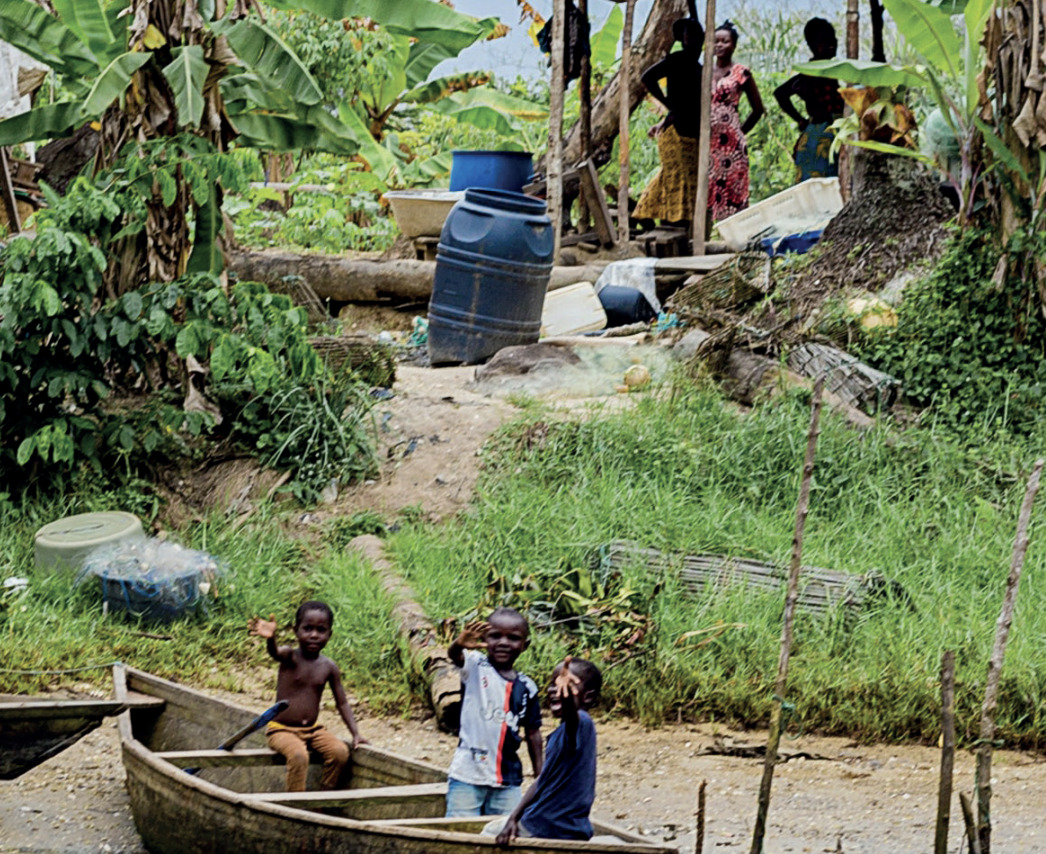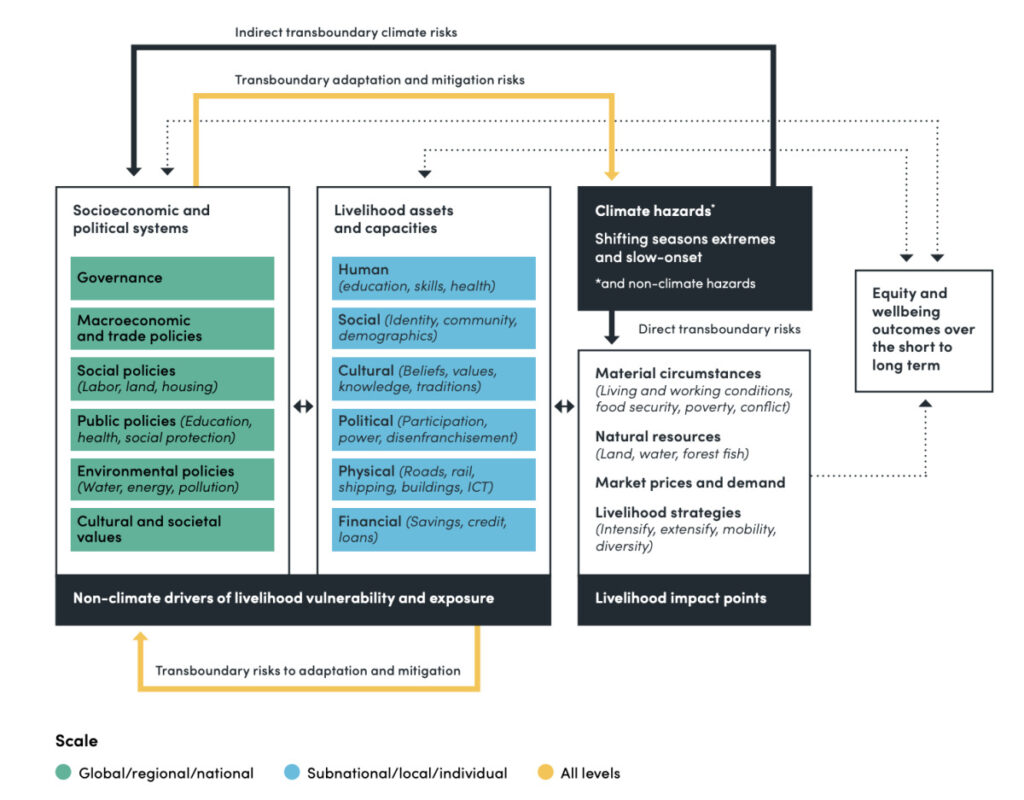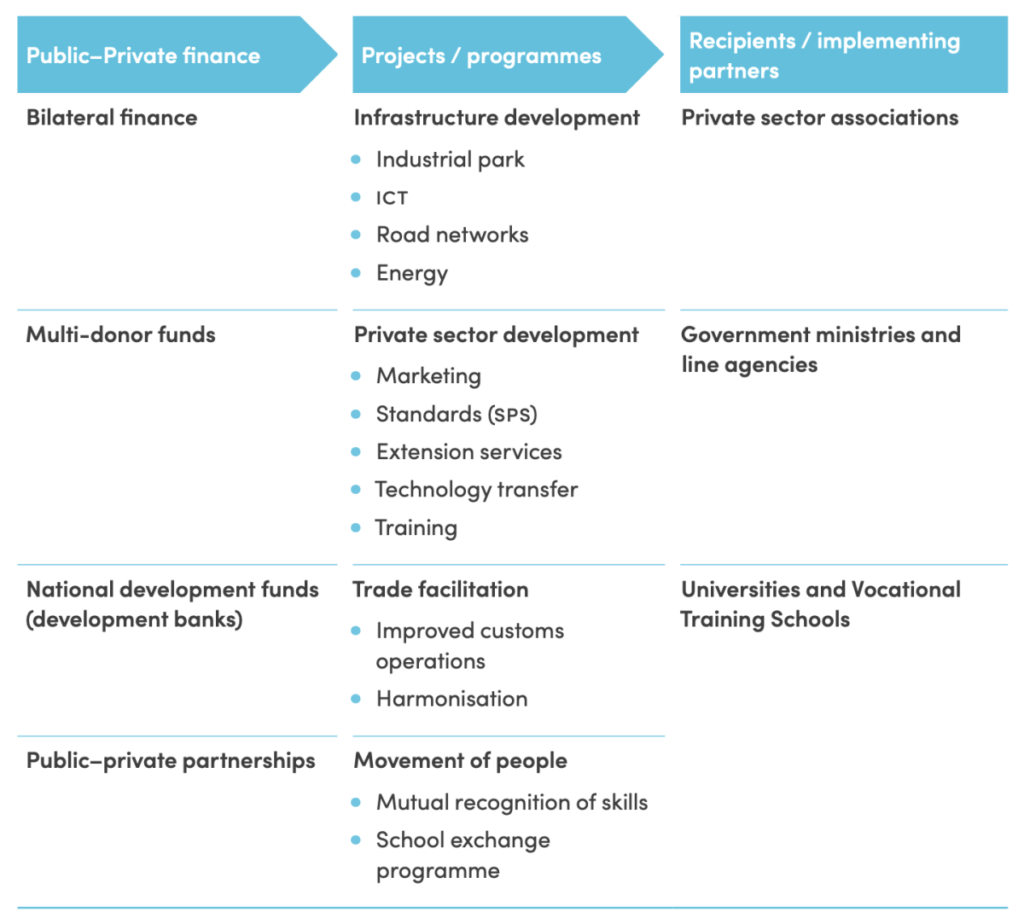Policy mechanisms of the African Union and the Regional Economic Communities to manage transboundary climate risks

Introduction
If individual countries are slow to recognise the transboundary climate risks (TCARs) they face and that they’ve potentially created, are there multicountry policy avenues and mechanisms that could be utilised to assist African countries in assessing and managing such risks in a coordinated and cooperative manner?
This report by the Adaptation Without Borders partnership conducts a deeper dive into African Union (AU) policies and programmes and those of four regional economic communities (RECs) – the Common Market for Eastern and Southern Africa (COMESA), the Economic Community of West African States (ECOWAS), the East African Community (EAC) and the Intergovernmental Authority on Development in Africa (IGAD). The purpose of this study is to gain a better understanding of the political economy of TCARs and their management within existing continental and REC climate, economic, trade, infrastructure and people-centred policies and programmes. The authors then use this understanding to identify entry points within AU and REC mechanisms that could assist member states in coordinated TCAR management.
The report explores the enabling conditions within existing policy structures for enhancing cooperation and managing transboundary climate risks. It highlights ways of moving forward and recommends feasible actions that can be taken by the African Union and the RECs to meet the shared challenges to climate-resilient development that Africa faces. It is meant to be read as the supporting background document to Adaptation Without Borders’ A roadmap for African resilience: addressing transboundary and cascading climate risks.
This article is an abridged version of the original text, which can be downloaded from the right-hand column. Please access the original text for more detail, research purposes, full references, or to quote text.
Study methodology
This study involved a desktop review of African Union, ECOWAS, IGAD, COMESA and EAC policies covering multiple sectors. The authors assessed the degree to which TCARs are accounted for within a range of current AU and REC policies and associated flagship projects/initiatives.
The authors then engaged with participants from the African Union Commission (AUC), the African Union Development Agency (AUDA-NEPAD), the African Development Bank (AfDB), the African Group of Negotiators Expert Support (AGNES), and four RECs at a Policy Dialogue in Nairobi, Kenya in July 2023. At the Dialogue, the authors ground-truthed the desktop review and asked participants about the barriers, gaps and needs that need to be addressed in order to enhance regional and continental cooperation on adaptation and mitigation.
Learn more about the study’s methodology on page 7 of the report.
Key messages
TCAR creation: the need to look beyond climate policies
Subnational to national policies and programmes – around socioeconomic development priorities, land use planning and resource management, infrastructure, finance and trade – and how they do or do not account for and integrate disaster (including climate) risk management contribute significantly to the creation of systems’ vulnerabilities and exposures, which in turn drive climate and disaster risks at the individual, community, national, regional and international levels.
But mismatches between these policies at the different scales – in part due to competing member state interests and lack of coordination – and a failure to assess and account for cascading climate risks are among several factors contributing to the creation of TCARs in Africa.
Learn more about transboundary climate risk creation on pages 8-10.

Existing governance mechanisms for managing TCARs
Understanding the governing organs of the African Union and the RECs is crucial for articulating which bodies currently have the mandates to consider and integrate management of TCARs within the sectoral policies and programmes under their jurisdiction. The Union has international legal personality which is separate from the international legal personality of the member states and has growing supranational powers. There are also several ministerial bodies operating on the continental scale, some of which predate the formation of the African Union, that are instrumental in formulating, harmonising and coordinating sectoral policies and actions.
Explore existing governance mechanisms in more detail on pages 10-18.
Barriers and gaps for managing TCARs in existing policies and mechanisms
Policy Dialogue participants stressed that certain policy sectors – freedom of movement and transhumance; trade and food security; and ICT and infrastructure – faced the most significant barriers and gaps in understanding and addressing TCARs at regional to continental scales. Agricultural and livestock regional policies and programmes tend to have the most awareness of multi-country, cascading climate risks; those related to trade and food security, and infrastructure and ICT have the least.
Dialogue participants also reiterated that the perceived geopolitical nature of many transboundary climate risks could make some member states reluctant to cooperate and coordinate through regional response mechanisms as articulated in the aims of the AU and RECs’ climate strategies.
Learn more about barriers and gaps on pages 18-20.
Financing the management of TCARs
Climate finance, while helpful and needed, is insufficient at meeting the adaptation gaps that span the local to transboundary scales. Finance for TCAR management (and other scales of adaptation) needs to be incorporated into loan and grant terms, trade pacts, business deals, and other sources of (non-climate) finance.
Financing for development – from healthcare programmes to trade pacts to infrastructure – is likely to be the most significant source of funding for TCAR management within existing AU and REC policy mechanisms and projects. This funding can be leveraged from within national economic development budgets if earmarked by parliamentarians, REC and AU projects and in public–private ventures.
Explore climate finance and non-climate financial mechanisms on pages 21-25.

Opportunities for managing TCARs in existing mechanisms
At the Policy Dialogue, representatives from the AUC, AUDA-NEPAD, AGNES and four RECs identified a number of needs and opportunities for managing transboundary climate risks within existing policy mechanisms and for overcoming some of the inertia around leveraging finance and action.
These needs and opportunities, aligned within existing AU and REC policy mechanisms, gave rise to a roadmap for action. Adaptation Without Borders worked with the AUC, AUDA-NEPAD, AGNES and representatives from four RECs at the Policy Dialogue to propose a possible roadmap, published as A roadmap for African resilience: addressing transboundary and cascading climate risks. It sets out 25 key actions across five strategic axes: i) recognising risks, ii) knowledge and data, iii) governing together, iv) implementing Africa-wide adaptation and v) mobilising resources for resilience.
Explore opportunities for managing transboundary climate risks in more detail on pages 26-31.
Conclusion
This report demonstrates that new policies, including climate policies, are not necessarily needed at the national to continental levels to manage cross-border and cascading climate risks. Existing mechanisms can be leveraged by integrating assessments of TCARs and management options into implementation plans of existing climate strategies and sectoral policies, especially given current regional cooperation mechanisms in place via the RECs and under the African Union.
Further resources
- Suggested Citation:Opitz-Stapleton, S., Lindsay, C. and Anisimov, A. (2023) Policy mechanisms of the African Union and the Regional Economic Communities to manage transboundary climate risks. London: ODI. Available at: adaptationwithoutborders.org
Related resources
- A Roadmap for African Resilience
- Developing guidance on managing transboundary climate risks in adaptation and sectoral planning
- Policy brief: How can Africa manage the transboundary climate risks it faces?
- An African perspective on transboundary and cascading climate risks
- The Global Transboundary Climate Risk Report

(0) Comments
There is no content